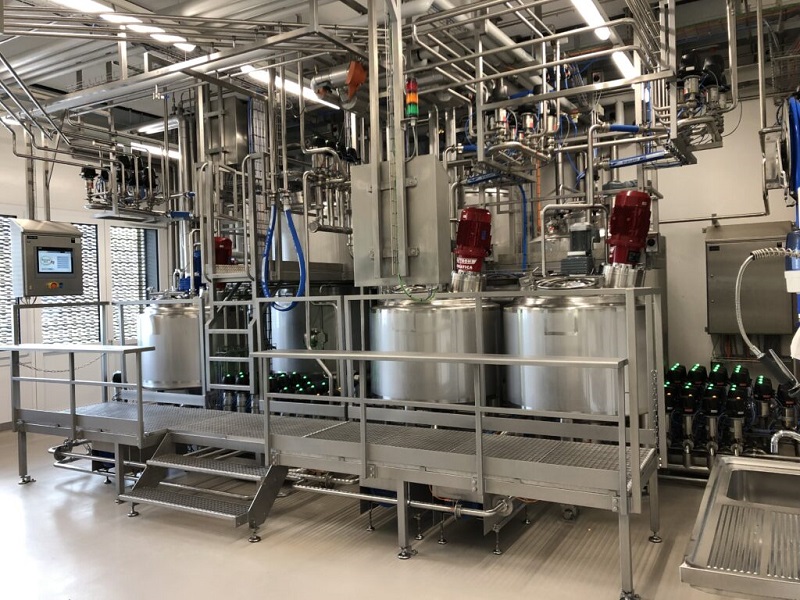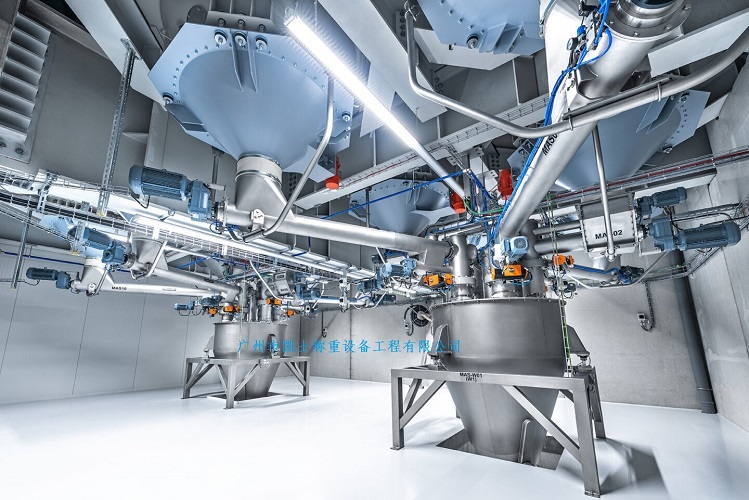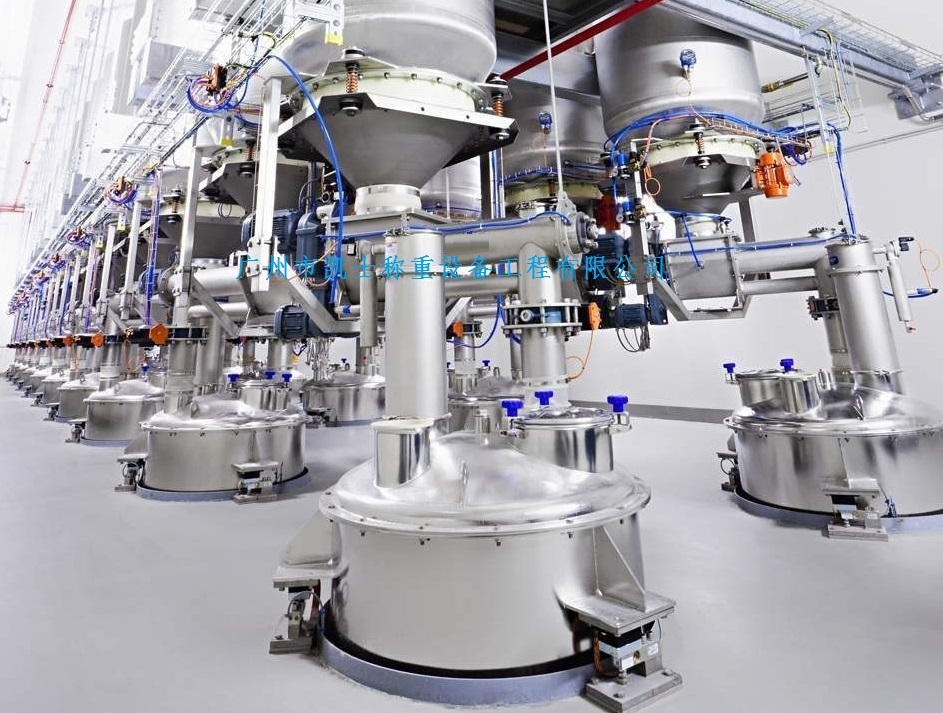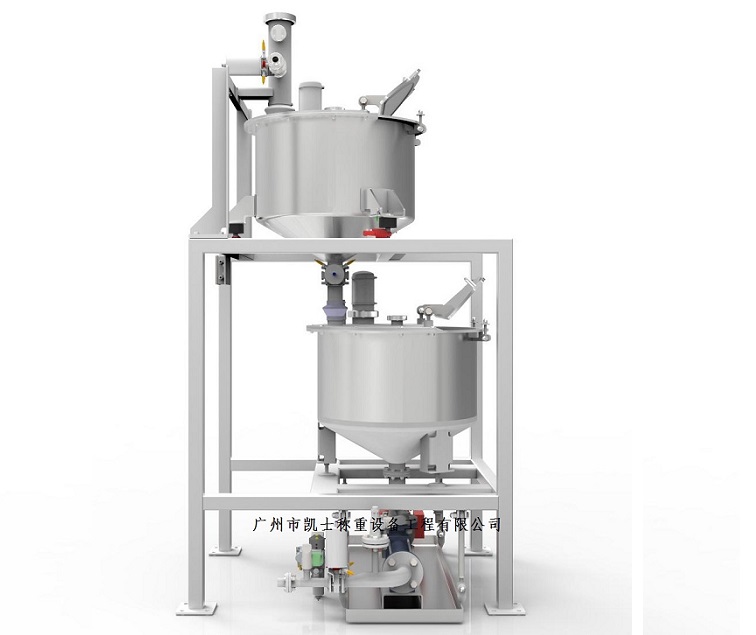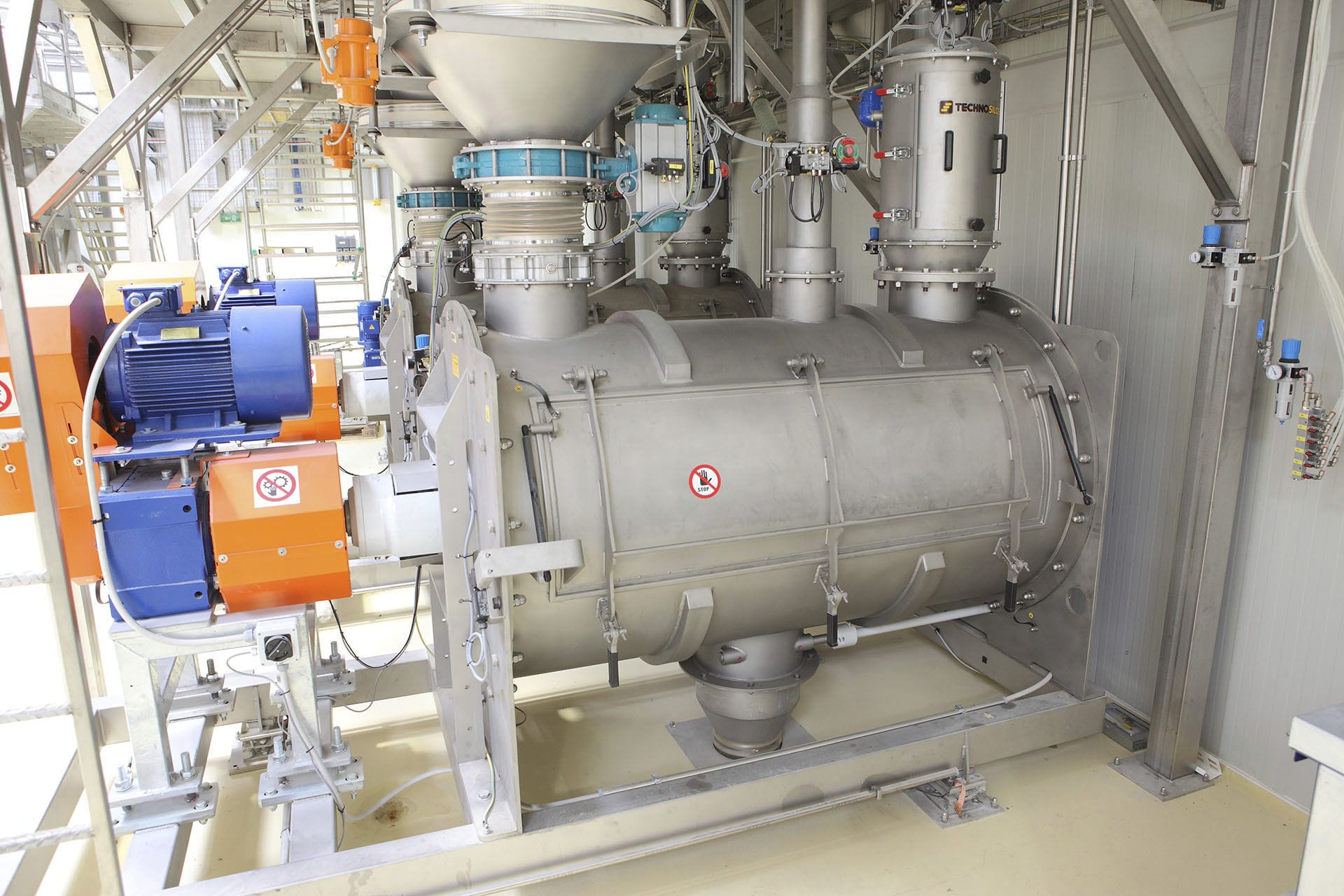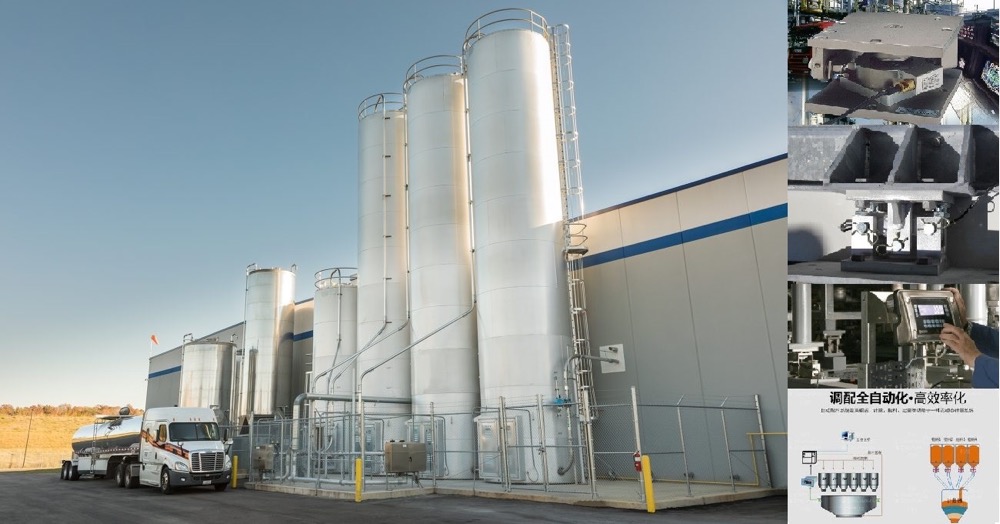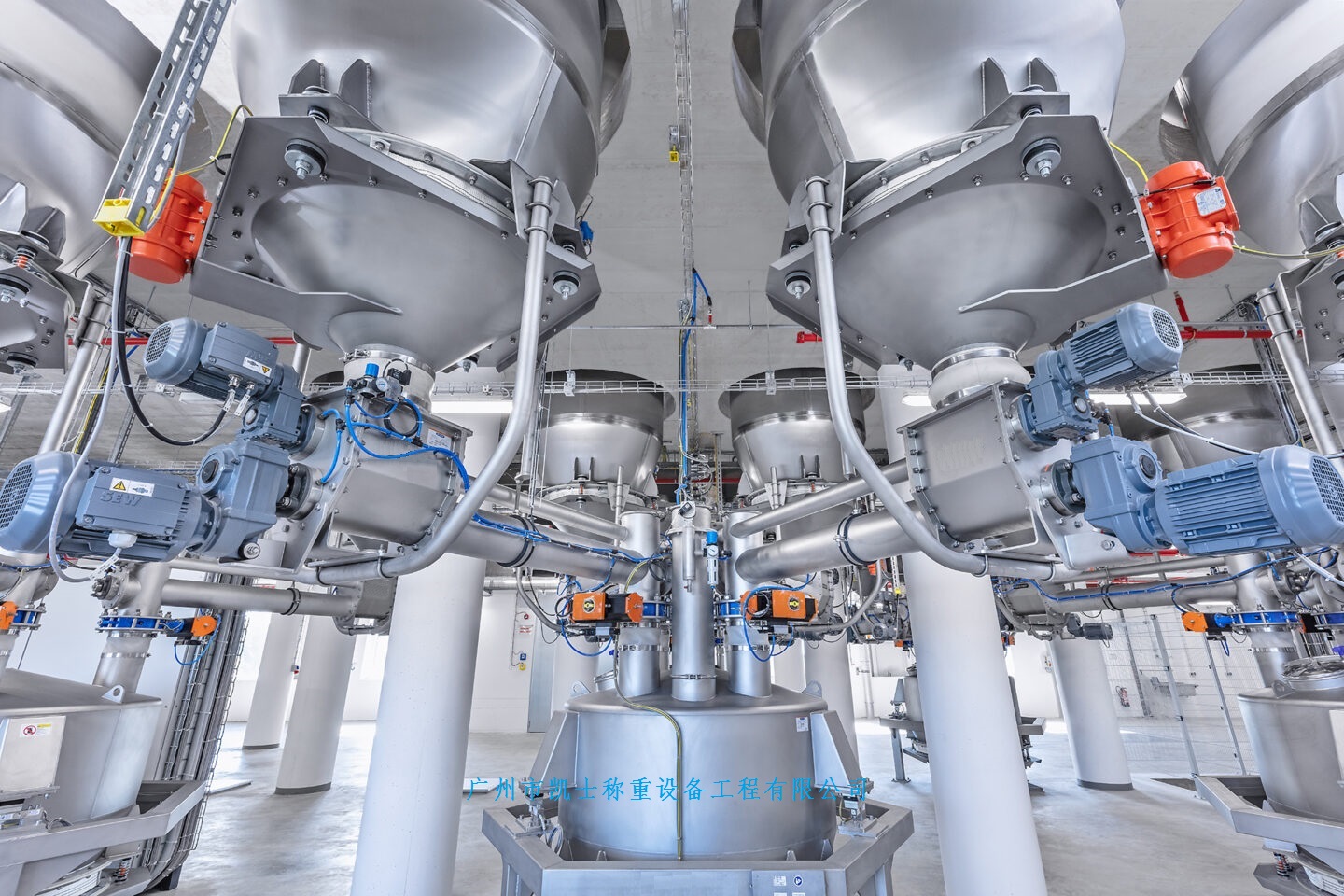

 2020.08.18
2020.08.18Summary:The continuous weight loss scale is designed based on the principle of controlling weight loss during operation. The weight of the material in the carrier is converted into an analog quantity through the weighing module and weighing instrument and sent to the programmable controller. The programmable controller will calculate the weight of the material. Compare and judge with the set upper and lower weight limits, and control the feeding device to intermittently feed the material into the carrier; at the same time, the programmable controller compares the calculated actual discharge rate (discharge capacity) with the set Compare with the set discharge rate, and control the frequency converter through internal PID adjustment to control the discharge device so that the actual discharge rate accurately tracks the set value.
In modern industrial production, continuous loss-in-weight scale is a kind of continuous feeding equipment that can continuously regulate the conveying rate of materials and measure the conveying, which is also called loss-in-weight feeding scale. It can be used for continuous conveying of powder, ball, flake, granule and all kinds of short-fiber materials, belonging to a kind of continuous cumulative automatic weigher. Because it almost no maintenance, than other forms of continuous feeding scale can better adapt to the industrial environment and process requirements, in Europe, the United States, Japan and other industrialized countries are becoming more and more widely used, but also by China's cement, chemicals, plastics, food and medicine and other related industries, and gradually promote the attention and attention.
1 Loss-in-weight scale working principle and basic composition
1.1 Working principle of loss-in-weight scale
Continuous loss-in-weight scale is designed according to the principle of controlling weight loss at work, the weight of the material in the bearer is converted into an analog quantity through the metering module and the weighing transmitter to be sent to the programmable controller, which compares and judges the calculated weight of the material with the set upper and lower weight limits, and then feeds the material intermittently through the control feeder device to the bearer; meanwhile, the actual discharge rate (discharge rate) (the rate of discharge of the material) is calculated by the programmable controller, and then the weight of the material is calculated and sent to the programmable controller. At the same time, the programmable controller compares the calculated actual discharging rate (discharging capacity) with the set discharging rate, and controls the frequency converter through internal PID adjustment, thus controlling the discharging device so that the actual discharging rate accurately tracks the set value. When the feeder is turned on to feed the loader, the control signal locks in the discharge rate for volumetric discharge. The human-machine interface will display the actual discharge rate and the cumulative weight of the discharged material.
1.2 Loss-in-Weight Scale Equipment Composition
Loss-in-weight scales are mainly composed of feeding device, weighing control system, discharging device and weight display controller.
1.2.1 Feeding device
The feeding device is used for quick feeding control of the weighing module and adopts the form of round arc door, which has the advantages of strong sealing, flexible opening and closing, and quick and smooth feeding.
1.2.2 Weighing control system
Weighing control system is used for measuring and storing materials, the effective volume of dosage control system is usually selected in accordance with the volume of materials for the whole weighing process of 3~5min under the maximum discharge flow. The feeding time of the infeed unit (time without weight control and adjustment) is about 10% of the total weighing process. The weighing control system is equipped with a load cell to convert the weight of the material into an electrical signal for PLC control.
1.2.3 Discharge device
The discharge device is used to discharge the materials in the weighing control system. According to the characteristics of the materials to be conveyed and the different environments, continuous conveying equipment such as screw conveyor and belt conveyor can be used, and the frequency conversion technology is used to change the rotational speed of the motors to regulate the feeding speed.
2 control system design
Loss-in-weight scale control system adopts Siemens S7-300/400 series PLC with industrial Ethernet interface, which can be freely expanded when the loss-in-weight scale control task increases. The digital input and output modules adopt 16-point 24VDC SM322 and SM321, the analog weight signal input adopts 8-point 16-bit SM311, the temperature signal input adopts 8-point 16-bit SM331, and the analog speed signal output adopts 8-point 12-bit SM332.
The upper computer workstation adopts 3 sets of Lenovo commercial machine, which realizes MPI communication with PLC through CP5611 communication card. The human-machine interface (HMI) adopts WinCC of SIEMENS, which has a complete operation interface and can record all kinds of data and alarm display in real time. Users can choose the number of software points and functions according to the size of the system.
3 Loss-in-weight scale debugging and precautions
3.1 Commissioning of Loss-in-Weight Scale
Loss-in-weight scales are not affected by the mechanical changes of the scale body and the feeding mechanism in principle, and have the characteristics of both static and dynamic scales, therefore, static and dynamic commissioning must be carried out before use.
(1) Static commissioning steps.
1)Prepare the corresponding weights according to the maximum range of the scale label;
2) Zero adjustment: when the scale is empty, adjust the zero parameter and magnification on the weighing instrument, and adjust the weighing display to zero on the upper computer;
3) Maximum range adjustment: add weights one by one to the full range, observe whether the display on the upper computer calibration screen is the same as the weights added to the scale, and then click calibration full scale on the calibration screen;
4) If there is any deviation, remove all the weights, observe whether the display on the calibration screen is zero, and then click Calibrate Zero;
5) Repeat steps 3 and 4 until the requirements are met.
(2) Dynamic calibration steps
Dynamic calibration requires the preparation of 1 stopwatch and 30~50kg electronic scale, according to the requirements of the recipe for the corresponding loss-in-weight scale for stand-alone calibration, the flow of recorded data and the microcomputer set the flow rate to compare, and observe whether it is within the set range.
3.2 Loss-in-weight scale design considerations
Loss-in-weight scales both static scales, dynamic scales characteristics, consider the factors of accuracy, in the design of the system requires:
(1) the correct range of conveying rate, generally the best actual working range of 30% ~ 80% of the rated conveying capacity, if the use of AC speed control, on the strain frequency of 15 ~ 40Hz, so as to ensure that the adjustment range is wide.
(2) weighing sensor range selection is appropriate, the maximum volume of the weighing hopper according to the design of the maximum flow operation, to ensure stable operation for 3min, the actual design of the sensor range using the system can be 60% ~ 80%, the wider the range of signal changes, the higher the accuracy of the system. Must give the sensor to reserve a certain amount of margin, to avoid overfilling, beyond the range of the sensor, damage to the sensor.
(3) The system calculates the actual flow rate by differential reduction, which puts high requirements on the stability of the weight signal. Therefore, the following points should be noted:
1) Good grounding to prevent interference, signal cable and power cable must be separated and placed in different cable troughs.
2)The shielding line of weighing module and signal line, ground line, etc. can not form a loop, otherwise it will cause the instrument to lose signal instability.
3) The weighing instrument should be installed in the field as far as possible in order to reduce the signal interference.
4 Application trends
In order to be more adaptable to the needs of dynamic and accurate measurement, it is crucial to use the load cell as the input of the system in the weighing system. At present, most of the traditional analog sensors are used in China, and their signals are susceptible to radio frequency interference, and the cable transmission distance is usually within 10m. With the rapid development of electronic control technology, loss-in-weight scales through the use of new technologies to continuously improve the accuracy of measurement, the core of this new technology, that is, the application of digital weighing modules, the advantages of which is to achieve "self-calibration", "self-diagnosis", and high resolution. Therefore, the application of digital weighing module in weighing system will be a trend!
5 Conclusion
Loss-in-weight weighing automatic dosage system in the South Wind, Nars Nippon Chemistry, Libai Nippon Chemistry, Shandong Lippo Nippon Chemistry, Nanjing Jia and Nippon Chemistry production lines have a large number of applications, Procter & Gamble laundry detergent factories in China, and all of its processing plants all use loss-in-weight weighing system for the back of the dosage production, and has achieved significant economic benefits.


















